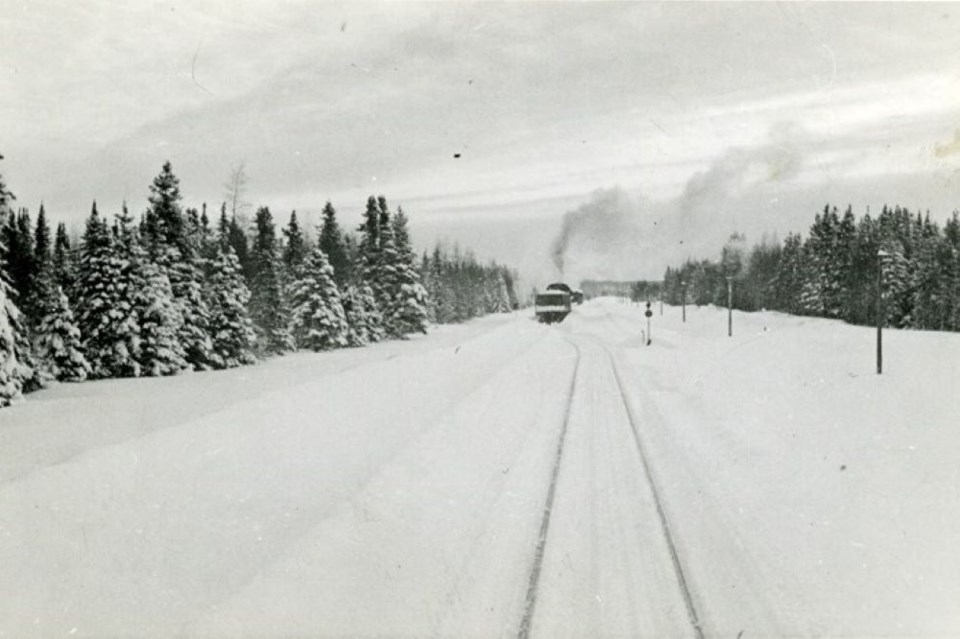On the morning of Oct. 13, 1914, the first passenger train departed from Sault Ste. Marie for Hearst along the Algoma Central Railway.
For fifteen years, a group of track layers had trekked through the uncharted northern wilderness between the two sites, winding around mountains, building large wooden trestles across rivers and dropping down 500 feet through the Agawa Canyon. At last, the two destinations were connected by 296 miles of railroad and ready for travellers.
According to old-time railroader J.W. Mills, the train crew was “composed of gentlemen-roughnecks who were carefully selected by an elimination process, wherein the simple criteria were their proficiency in fisticuffs, their capacity for hard liquor and their present and subsequent deportment under these conditions.” Considered lower on the social scale than the average citizen, most of the engine crew members were illiterate.
Assistants to the engine crew were also selected through abnormal tests of speed and endurance. If a man could run to Pete Sundstrom’s bar in Searchmont and carry back water pails full of beer three times in a row before the train departed the station, he was welcomed aboard. Successful candidates were rewarded with free transportation along the rails for their efforts.
Due to the unruly engine crew and belligerent lumberjack passengers onboard, women were isolated, or rather, barricaded, in a separate coach at the back of the train. They were joined by clergymen, tasked with helping those less fortunate or mentally ill who lived alone in the Algoma Highlands.
There was no dining car, but when the train slowed down or stopped passengers could hop outside and gather large swaths of wild berries before climbing back onboard.
With the sun still rising, crew members were already blitzed from the beer.
At Mile 48, the train passed through Ogidaki Station. For sport, one of the baggage men had placed a barrel some distance away in the nearby lake as a target for his .303 Savage rifle.
Mills claimed “The barrel had not been disturbed or materially damaged for a period of about ten years, which attested to the continuing potency and effectiveness of Searchmont beer.”
Between 1918 and 1923, several members of the Group of Seven were passengers on the train, including Lawren Harris, A.Y. Jackson, Frank Johnston, J.E.H. Macdonald and Arthur Lismer. The group rented a boxcar from the Algoma Central Railway and it was shunted around to several distinct destinations along the track. The boxcar was modelled like a cabin for comfort, as the painters would spend several days onsite, sometimes leaving on foot in search of the region’s hidden landscapes.
Starting on Dec. 15, 1929, the passenger train began operating every day of the week. Departing from the Sault at 8:30 a.m., the train was scheduled to arrive in Hearst at 8:45 p.m.
With the railway now passing through Sand Lake, travellers were able to see the splendid Montreal River Falls and the wonders of the Agawa Canyon. Eventually, the canyon became a famous destination for tourists around the world.
Each week, the Sault Ste. Marie Public Library and its Archives provides SooToday readers with a glimpse of the city’s past.
Find out more of what the Public Library has to offer at www.ssmpl.ca and look for more Remember This? columns here.
